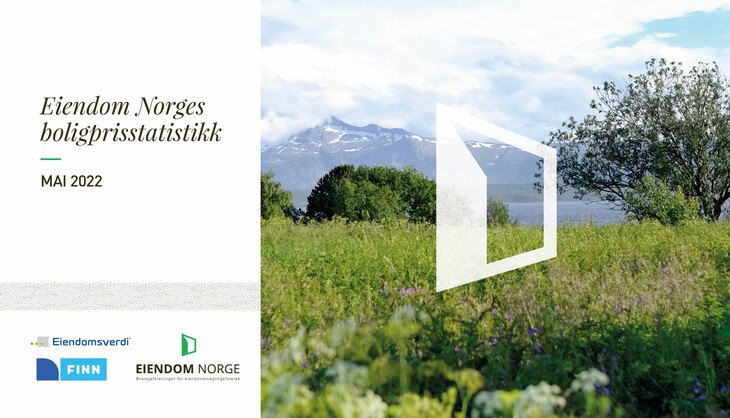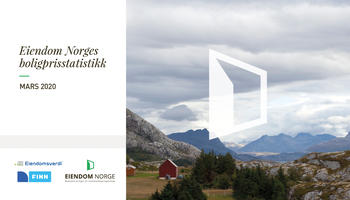
Strong growth in housing prices in May
Housing prices rose by 1.2 per cent in May 2022. Adjusted for seasonal variations, prices rose by 0.7 per cent.
House prices have risen by 6.4 per cent in the last year.
The average price for a home in Norway was NOK 4,714,871 at the end of May.
- Housing prices in Norway rose sharply in May, and inflation was particularly strong in central Eastern Norway, says Henning Lauridsen, CEO of Eiendom Norge.
- The strong inflation last month is surprising in light of higher interest rates and high inflation both nationally and globally. At the same time, price pressure is created by the low supply side of the second-hand housing market, higher costs and bottlenecks for the production of new homes, as well as strong population growth. The Norwegian economy is also doing very well at the moment and this is increasing demand for housing, he says.
- When it comes to the supply side in the second-hand housing market, it is still weaker than in previous years, even though there has been a small growth in the number of new homes on the market through May, Lauridsen says.
Big sale in May
In May, 10,436 homes were sold in Norway, which is 0.9 per cent more than the corresponding month in 2021.
So far this year, 38,819 homes have been sold in Norway. That is 11.4 per cent less than the same period last year.
In May, 11,708 homes were put up for sale in Norway, which is 0.2 per cent more than in the same month in 2021.
So far this year, 42,668 homes have been put up for sale. That is 8.9 per cent less than in the same period last year.
- A great many homes were sold in Norway in May and many new homes have also been put on the market. However, the supply side is still characterized by the low supply from earlier this year.
- The gap on the supply side compared to 2021 is somewhat smaller than in April and we also expect many new second-hand homes on the market in June, says Lauridsen.
It took an average of 26 days to sell a home in May, down from 29 days in April. Oslo, Asker and Bærum, Drammen w / surroundings and Bodø / Fauske had the shortest sales time, all with 16 days. Tromsø had the longest sales time with 41 days.
- The sales period has continued to decline nationally, and in many places in the country it is very fast to sell a home, says Lauridsen.
Oslo must regulate enough housing
Oslo had the strongest seasonally adjusted price development in May, with an increase of 1.6 per cent. Hamar w / Stange had the weakest seasonally adjusted price development with a seasonally adjusted decrease of 0.1 per cent.
Bodø / m Fauske has the strongest 12-month growth with an increase of 10.5 per cent, followed by Kristiansand with 9.7 per cent.
Oslo also has a strong increase in 12-month growth with an increase to 7.1 per cent from 4.6 per cent in April.
- After a moderate development in house prices in Oslo in 2021, house prices in the capital have risen sharply so far this year.
- Oslo Municipality must take the challenges on the supply side and housing construction seriously, otherwise housing prices here will rise even more. Measured according to the demographic need, about 40,000 have been built for a few homes in Oslo since 2000. This lag must be made up for, and special emphasis must be placed on larger development areas throughout the city.
- When the Planning and Building Authority in Oslo now wants a building ban in the small house areas, the approximately 300 homes that are built here annually must be replaced with other projects. If not, the price pressure will only intensify in the years to come, and despite significantly higher interest rates, Lauridsen concludes.






